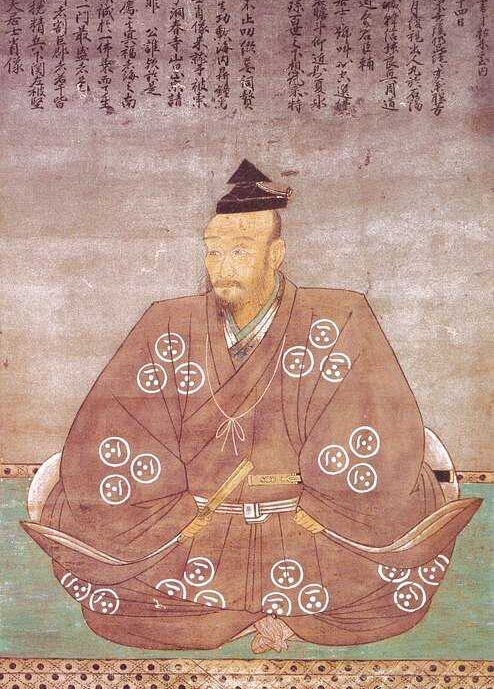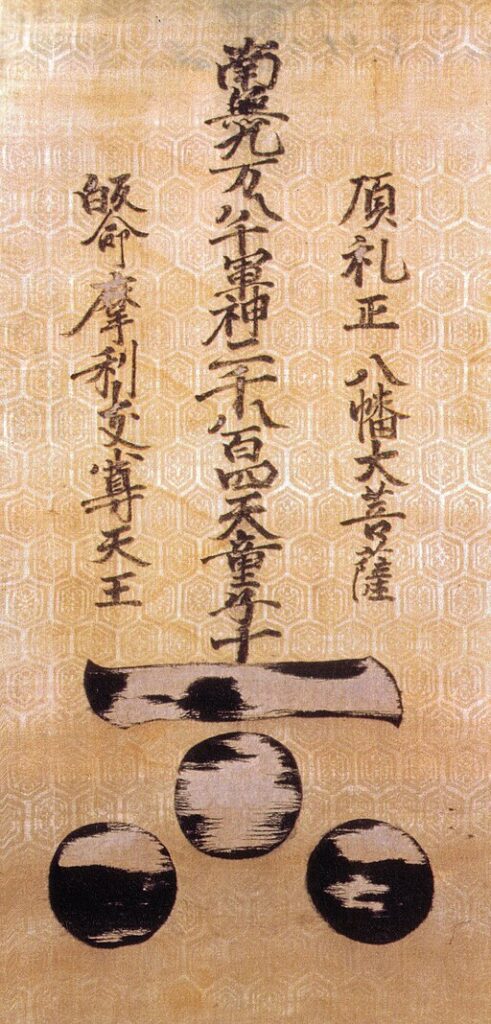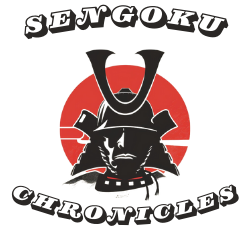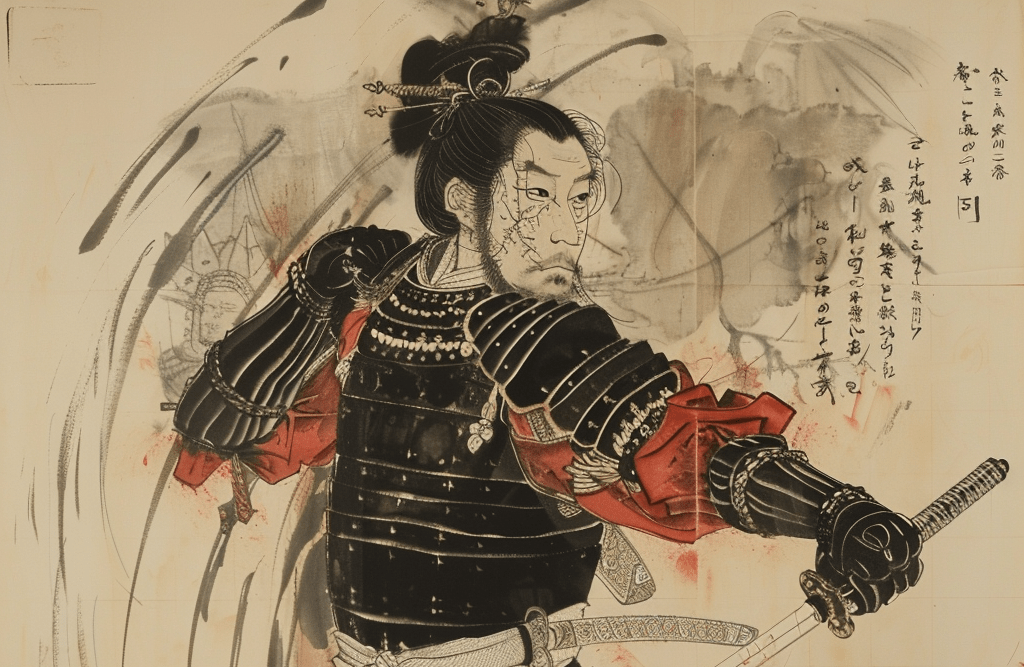Introduction
The Sengoku period, often referred to as the “Warring States” era of Japan, was a tumultuous time marked by relentless conflict, political upheaval, and the rise and fall of powerful samurai warlords. Amidst the chaos of the 16th century, one name stands out for his remarkable acumen in leadership, strategy, and governance—Mori Motonari. A figure who might not be as internationally renowned as Oda Nobunaga or Toyotomi Hideyoshi but whose impact on Japanese history is equally profound. Motonari’s story is one of cunning diplomacy, strategic marriages, and a keen understanding of military tactics, which enabled him not only to survive but to thrive in one of the most volatile periods in Japanese history.
Mori Motonari was born into a world where power was transient, and only the most astute could rise to prominence. As the daimyo of the Aki Province, he would come to embody the ideal of the Sengoku leader—wise, resourceful, and indefatigable. His life was a testament to the power of intelligence over brute force, showcasing how strategic insight could outmaneuver sheer military might. Through his journey from a local lord to the unifier of the Chugoku region, Motonari’s legacy offers invaluable lessons in leadership and strategy.
In exploring Mori Motonari’s life and accomplishments, this blog post aims to shed light on his strategies, his battles, and the governance that enabled him to leave an indelible mark on the history of feudal Japan. From his early rise to power to the legacy that outlived his reign, we delve into the complexities of a man who navigated the treacherous waters of the Sengoku period with unparalleled finesse. Through historical texts, we’ll quote Motonari’s own words and those of his contemporaries to bring depth to our narrative. Visual aids, such as maps of his campaigns and timelines of his rule, will help illustrate the expanse of his influence. By comparing Motonari with his peers, we aim to highlight the unique qualities that made him a standout figure in Japanese history.
Mori Motonari’s story is not just a tale of conquest and power but a reflection on the values of unity, strategy, and foresight. It’s a narrative that resonates well beyond the confines of feudal Japan, offering timeless insights into the art of leadership and the complexities of human ambition. Join us as we journey through the life of Mori Motonari, the cunning strategist of the Sengoku era, whose legacy continues to inspire centuries after his time.
Early Life and Rise to Power
Mori Motonari, born in 1497, was not destined from birth to become one of the most powerful daimyo of the Sengoku period. His early years were marked by the modest stature of his family, who were local lords within the Aki Province. However, what his lineage lacked in prestige, Motonari made up for with his sharp intellect and visionary leadership. His upbringing, steeped in the tumultuous politics of the time, was the crucible that forged his strategic mind and diplomatic skills.
Path to Power: The Consolidation of Control over Aki Province
Motonari’s journey to power began in earnest with his assumption of the Mori clan leadership following his father’s death. Initially ruling over a relatively small domain, he faced the constant threat of more powerful neighbors and the ever-present challenge of internal dissent. However, Motonari’s adeptness at navigating these dangers set the stage for his rise. He utilized a combination of martial prowess, strategic marriages, and alliances to gradually expand his influence. His marriage to the daughter of a powerful local clan not only secured him a valuable ally but also demonstrated his understanding of the political value of matrimonial ties.
Key Battles and Strategies

One of Motonari’s early and most significant military engagements was the Battle of Arita-Nakaide in 1517, where he decisively defeated the Amako clan. This victory was not merely a testament to his military might but also to his strategic planning and ability to inspire loyalty among his troops. It was during battles like these that Motonari showcased his preference for winning through cunning and strategy over direct confrontation.
Another cornerstone of Motonari’s rise was his strategic use of alliances. By supporting the Ouchi clan, one of the most powerful families in the region, he managed to place himself in a favorable position within the complex web of Sengoku period politics. This alliance was crucial in his campaign to unify the Aki Province, as it provided him with the necessary backing to challenge and eventually subjugate rival clans.
The Strategic Mind of Motonari
Motonari’s strategies extended beyond the battlefield. He was keenly aware of the importance of economic strength and internal stability. Implementing land surveys and promoting trade within and beyond his domains, he ensured a stable economy that could support his military campaigns. Moreover, Motonari’s governance was characterized by a forward-thinking approach to leadership, where merit was often rewarded over birthright, a practice that helped cultivate loyalty and competence among his retainers.
In His Own Words and The Legacy of His Early Rule

To illustrate Motonari’s strategic mindset, historical texts quote him emphasizing the importance of foresight and preparation. He famously stated, “One must plan three moves ahead and anticipate the moves of an adversary.” This philosophy underpinned his approach to both warfare and governance, enabling him to outmaneuver rivals who often relied on brute force or sheer numbers.
Visual aids, like maps of Motonari’s early campaigns, help us appreciate the strategic significance of his victories and the gradual expansion of his domain. These victories were not just military triumphs but steps in a larger plan to consolidate power and unify the Chugoku region under his rule.
Comparing Motonari to his contemporaries, it’s clear that while many daimyo of the period relied heavily on military might, Motonari’s rise to power was as much a result of his diplomatic cunning and strategic marriages as it was of his prowess in battle. His early rule set the stage for the Mori clan’s dominance in the region, showcasing the blend of martial, economic, and diplomatic strategies that would define his legacy.
Motonari’s ascent from a local lord to a regional power broker exemplifies the complex interplay of strategy, diplomacy, and leadership that characterized the Sengoku period. His early life and rise to power serve as a compelling introduction to the story of a leader who, through intelligence and foresight, was able to navigate the treacherous waters of feudal Japan to emerge as one of its most adept rulers.
The Unification of the Chugoku Region
Mori Motonari’s ambition extended far beyond the consolidation of Aki Province. His ultimate goal was the unification of the Chugoku region, a vision that would require not just military might but an unparalleled strategic mind. Motonari’s journey towards this goal was marked by a series of calculated moves, alliances, and battles that showcased his adeptness as both a warrior and a statesman.
Expansion Strategies
Motonari’s expansion strategies were multifaceted, combining military campaigns with diplomatic maneuvers. Understanding the complex tapestry of allegiances and rivalries in the Chugoku region, he skillfully navigated these relationships to his advantage. He often preferred to outwit his opponents rather than outfight them, a tactic that saved resources and minimized risks. Motonari’s approach to expansion was methodical, ensuring that each step taken was sustainable and fortified his position within the region.
Notable Campaigns and Alliances
One of the most pivotal moments in Motonari’s quest to unify the Chugoku region was the Battle of Miyajima in 1555, where he famously defeated the Sue clan. This victory was significant not just for its military outcome but for the cunning strategy Motonari employed, tricking his enemies into thinking Miyajima Island was undefended. This battle exemplifies Motonari’s strategic genius, illustrating how he leveraged deception and surprise to secure victories against more formidable foes.
The alliances formed with neighboring clans were equally crucial in his expansion efforts. By marrying his children into influential families, Motonari secured the loyalty and support of key players in the region. These alliances were not mere political conveniences but strategic assets that Motonari used to isolate his enemies and consolidate his power.
The Importance of Diplomacy and Marriage Alliances
Motonari’s diplomatic skills were as formidable as his military strategies. He understood that marriage alliances could serve as powerful tools for securing peace and loyalty, often preventing conflicts before they could start. These alliances helped to stabilize the region under his control, allowing for more efficient governance and administration. By weaving a complex network of familial ties throughout the Chugoku region, Motonari not only expanded his influence but also established a durable peace that would benefit his descendants.
The Culmination of Motonari’s Efforts
The unification of the Chugoku region was not the end of Mori Motonari’s ambitions, but it was a significant milestone that secured his legacy as one of the most influential daimyo of the Sengoku period. His success in unifying the region demonstrated not only his military prowess but also his strategic foresight and diplomatic skill.
Visualizing Motonari’s Strategy
Maps of the Chugoku region, detailing Motonari’s campaigns and the territories under his control, offer a clear visual representation of his strategic expansion. These maps highlight the significance of his victories and the strategic locations that allowed him to exert control over the region.
Comparison with Contemporaries
When compared to his contemporaries, Mori Motonari’s approach to unification stands out for its emphasis on strategy and diplomacy over brute force. While other daimyo like Oda Nobunaga and Takeda Shingen are often remembered for their formidable military campaigns, Motonari’s legacy is one of cunning, strategy, and the effective use of alliances. His success in unifying the Chugoku region without the widespread destruction that characterized many of his contemporaries’ campaigns speaks to his unique approach to leadership and governance.
Mori Motonari’s unification of the Chugoku region is a testament to his vision and strategic genius. Through a combination of military acumen, diplomatic skill, and strategic marriages, he was able to consolidate power, secure peace, and lay the groundwork for the prosperity of his clan. His story is a compelling chapter in the history of the Sengoku period, showcasing the power of intellect and strategy in the face of overwhelming odds.
Governance and Administration
Mori Motonari’s prowess on the battlefield was matched by his acumen in governance and administration. His rule over the Chugoku region was characterized by innovative policies and effective management strategies that ensured the prosperity and stability of his territories. Understanding that the true strength of a domain lay not just in military might but in economic vitality and the welfare of its people, Motonari implemented a series of reforms that would solidify his legacy as a wise and just ruler.
Mori’s Approach to Governance
Motonari’s governance was forward-thinking, emphasizing efficient administration and economic development. Recognizing the importance of a stable economy, he conducted land surveys to accurately assess and redistribute land, ensuring fair taxation and increasing agricultural productivity. These surveys were not only administrative tools but also served to reinforce Mori control over newly acquired territories, integrating them more seamlessly into his domain.
In addition to land reforms, Motonari encouraged trade, both within his territories and with foreign traders. By fostering a favorable environment for commerce, he ensured a steady flow of wealth into his domain, which could then be reinvested into military and infrastructural development. This economic strategy not only bolstered his military capabilities but also improved the living standards of his subjects.
Military Innovations and the Organization of the Mori Army

Motonari’s military innovations were reflective of his strategic mindset. He understood the importance of a well-organized and disciplined army and took steps to reform the traditional samurai system. Under his leadership, the Mori army became a more cohesive and efficient fighting force, capable of rapid mobilization and versatile in its tactics.
He also recognized the potential of firearms, which had recently been introduced to Japan, and integrated them into his forces. This adoption of new technology gave his army an edge in battle, allowing them to defeat more traditional samurai forces.
Patronage of the Arts and Culture
Mori Motonari’s rule was also marked by his patronage of the arts and culture, which he viewed as essential components of a prosperous and enlightened society. By supporting artists, craftsmen, and scholars, Motonari cultivated a vibrant cultural scene in his domains, which not only enriched the lives of his subjects but also served to legitimize his rule and project his power.
His support for the arts was not merely a matter of personal taste but a strategic move to foster loyalty and unity among his people. Cultural achievements under his patronage helped to elevate the status of the Mori clan and cement their legacy in Japanese history.
The Impact of Motonari’s Governance
Mori Motonari’s governance strategies had a lasting impact on the Chugoku region, transforming it into one of the most prosperous and stable areas in Japan during a time of widespread conflict. His reforms in agriculture, trade, and military organization laid the groundwork for the economic and social stability that would allow the Mori clan to thrive for generations.
Visual Aids and Comparative Analysis
To illustrate the impact of Motonari’s governance, visual aids such as charts and maps can be used to show the economic growth and expansion of territories under his rule. Comparing these with the conditions before his ascendancy highlights the transformative effect of his policies.
When compared to other daimyo of his time, Motonari’s approach to governance and administration stands out for its holistic view of power. Unlike those who focused solely on military conquest, Motonari understood that true strength came from a well-governed, economically vibrant, and culturally rich domain.
Mori Motonari’s legacy as a ruler is a testament to the effectiveness of his governance and administration. His innovative policies and strategic foresight not only ensured the prosperity of his domain but also laid the foundations for a lasting peace and stability that benefited not just the Mori clan but all of Japan. Through his patronage of the arts and commitment to economic development, he demonstrated that the path to true power lies not in conquest alone but in the prosperity and well-being of one’s people.
Legacy and Historical Impact
Mori Motonari’s influence extended far beyond his death in 1571, leaving an indelible mark on Japanese history. His legacy is multifaceted, encompassing his achievements as a military strategist, a wise ruler, and a patron of the arts. The unification of the Chugoku region and the prosperity it enjoyed under his leadership are testaments to his foresight and governance skills. Moreover, the cultural and administrative innovations he introduced set a precedent for future generations, highlighting his lasting impact on the development of feudal Japan.
Succession and the Mori Clan’s Status After Motonari’s Death
Motonari’s careful planning extended to the succession of his leadership. He ensured that his clan was well-positioned to maintain its power and influence after his death. Under the leadership of his descendants, the Mori clan remained a dominant force in the Chugoku region, eventually becoming one of the most powerful samurai clans of the Sengoku period. This seamless transition of power underscores Motonari’s foresight in preparing his clan for the future.
The Tale of the “Three Arrows”: A Lesson in Unity
One of the most enduring stories associated with Mori Motonari is the tale of the “Three Arrows.” According to legend, Motonari presented his three sons with a single arrow each, which they could easily break. He then bundled three arrows together, which could not be broken, symbolizing the strength of unity. This lesson in unity and cooperation has transcended its historical context to become a widely cited allegory in Japanese culture, emphasizing the importance of familial and communal solidarity.
Mori Motonari’s Portrayal in Literature, Drama, and Modern Media
Motonari’s legacy has been immortalized in Japanese culture, where he is often portrayed as a wise and cunning leader. His life and achievements have inspired numerous works of literature, Noh and Kabuki dramas, and, more recently, films and television series. These portrayals have contributed to the public’s understanding of Motonari, often emphasizing his strategic genius and leadership qualities.
In modern media, Motonari is a popular character in video games and anime, where his cunning and strategic mind are highlighted. These portrayals, while sometimes taking liberties with historical accuracy, have helped to keep Motonari’s legacy alive in contemporary Japanese culture, introducing him to new generations.
Comparative Legacy
When compared to other prominent daimyo of the Sengoku period, Mori Motonari’s legacy is unique for its combination of military, administrative, and cultural achievements. While figures like Oda Nobunaga are remembered for their military conquests, and Toyotomi Hideyoshi for unifying Japan, Motonari’s legacy is characterized by his emphasis on strategic governance, economic prosperity, and cultural patronage. This blend of attributes has cemented his place as a revered figure in Japanese history.
Reflecting on Mori Motonari’s Legacy
Mori Motonari’s historical impact is profound, showcasing the power of strategic thought, governance, and the promotion of cultural values. His success in unifying the Chugoku region and his contributions to its prosperity have left a lasting legacy that continues to inspire. The tale of the “Three Arrows” remains a powerful symbol of unity and strength, reflecting Motonari’s wisdom and the values he espoused. As literature, drama, and modern media continue to explore and celebrate his life and achievements, Mori Motonari’s legacy endures, reminding us of the enduring impact of visionary leadership and strategic governance.
Conclusion
As we conclude our exploration of Mori Motonari’s life and legacy, it becomes evident that his impact on Japanese history and culture is both profound and enduring. Through his strategic genius, innovative governance, and cultural patronage, Motonari emerged as one of the most influential figures of the Sengoku period, a time characterized by conflict and upheaval. His achievements in unifying the Chugoku region and fostering a period of prosperity and stability stand as a testament to his visionary leadership and adeptness as both a warrior and a statesman.
Motonari’s story is not merely one of military conquests but also of the power of intellect, foresight, and unity. The tale of the “Three Arrows,” symbolizing the strength found in solidarity, continues to resonate in Japanese culture, serving as a timeless lesson in the importance of cooperation and familial bonds. This allegory, along with Motonari’s numerous achievements, highlights his philosophical approach to leadership and governance, one that valued strategic planning and the welfare of his people above all else.
The portrayal of Mori Motonari in literature, drama, and modern media further illustrates the lasting fascination with his character. Whether depicted as a wise ruler, a cunning strategist, or a revered elder, Motonari’s legacy continues to captivate and inspire. These representations, while sometimes romanticized, help keep his memory alive, allowing new generations to appreciate his contributions to Japanese history and culture.
Moreover, comparing Motonari to his contemporaries emphasizes his unique approach to leadership. Unlike many of his peers, who relied on brute force and intimidation, Motonari understood the value of diplomacy, strategic alliances, and the promotion of economic and cultural prosperity. This multifaceted legacy sets him apart, showcasing a model of leadership that is as relevant today as it was in the Sengoku period.
In reflecting on Mori Motonari’s life and legacy, we are reminded of the complex interplay between power, strategy, and governance. His ability to navigate the tumultuous waters of the Sengoku era with acumen and foresight provides valuable lessons in leadership and strategy. The prosperity and stability achieved under his rule demonstrate the enduring impact of visionary governance and the importance of cultural and economic development.
Mori Motonari’s legacy is a beacon of strategic brilliance, wise governance, and cultural enrichment, illuminating the path for future leaders and serving as a source of inspiration for all who seek to understand the art of leadership. As we move forward, let us carry with us the lessons of his life, reminding us of the power of unity, the importance of strategic foresight, and the enduring impact of visionary leadership.
Additional Resources
For those intrigued by the life and legacy of Mori Motonari and wish to delve deeper into the intricacies of his time, a multitude of resources are available. These resources not only enhance our understanding of Motonari’s impact but also provide a broader context of the Sengoku period, offering insights into the era’s political, social, and cultural dynamics. Below is a curated list of books, documentaries, and online resources that serve as valuable starting points for anyone looking to explore the fascinating world of feudal Japan and one of its most influential figures.
Recommended Books
- “Mori Motonari: Leadership, Strategy, and the Art of War” by Takeshi Yagi – This biography provides a comprehensive look at Motonari’s life, focusing on his military strategies and governance. It offers valuable lessons in leadership drawn from Motonari’s experiences.
- “The Sengoku Jidai: Culture and Conflict in Japan’s States of War” edited by Michael Wert – A collection of essays that delve into the cultural, social, and political aspects of the Sengoku period, providing a backdrop against which figures like Mori Motonari rose to prominence.
- “Samurai, Warfare and the State in Early Medieval Japan” by Karl F. Friday – This book explores the evolution of samurai warfare and statecraft in Japan, with insights into the strategies employed by daimyo like Mori Motonari.
Documentaries and Films
- “Japan: Memoirs of a Secret Empire” – This PBS documentary offers a compelling overview of Japan’s feudal era, including the role of the samurai and daimyo in shaping the country’s history.
- “The Unifiers: Masters of the Sengoku Period” – A documentary series that profiles several key figures of the Sengoku period, including Mori Motonari, illustrating their contributions to unifying Japan.
Online Resources
- Samurai Archives – An extensive online repository of information on samurai history and the Sengoku period. It features articles, podcasts, and forums where enthusiasts can explore topics related to Mori Motonari and his contemporaries.
- Nippon.com – Offers a wide range of articles on Japanese history and culture, including pieces on the Sengoku period and its notable figures. A great resource for understanding the broader context of Mori Motonari’s life.
- Metropolitan Museum of Art: Heilbrunn Timeline of Art History – Provides articles and thematic essays on Japanese art and culture, including the Sengoku period. This resource is invaluable for those interested in the cultural aspects of Motonari’s era.
Tips for Further Exploration
- When exploring these resources, consider the broader socio-political context of Mori Motonari’s actions and decisions. Understanding the complexities of the Sengoku period adds depth to our appreciation of his achievements.
- Look for parallels and contrasts between Motonari and other daimyo of his time. Comparing their strategies and legacies can offer insights into the era’s diverse approaches to leadership and governance.
- Engage with online forums and communities dedicated to Japanese history. These platforms can provide additional perspectives and insights that enrich your understanding of Mori Motonari’s impact.
By delving into these additional resources, enthusiasts and scholars alike can gain a fuller picture of Mori Motonari’s life and the tumultuous yet fascinating era in which he lived. Whether through the strategic insights of historical biographies, the visual storytelling of documentaries, or the depth of online articles and forums, there is much to learn and discover about this pivotal figure in Japan’s storied past.

